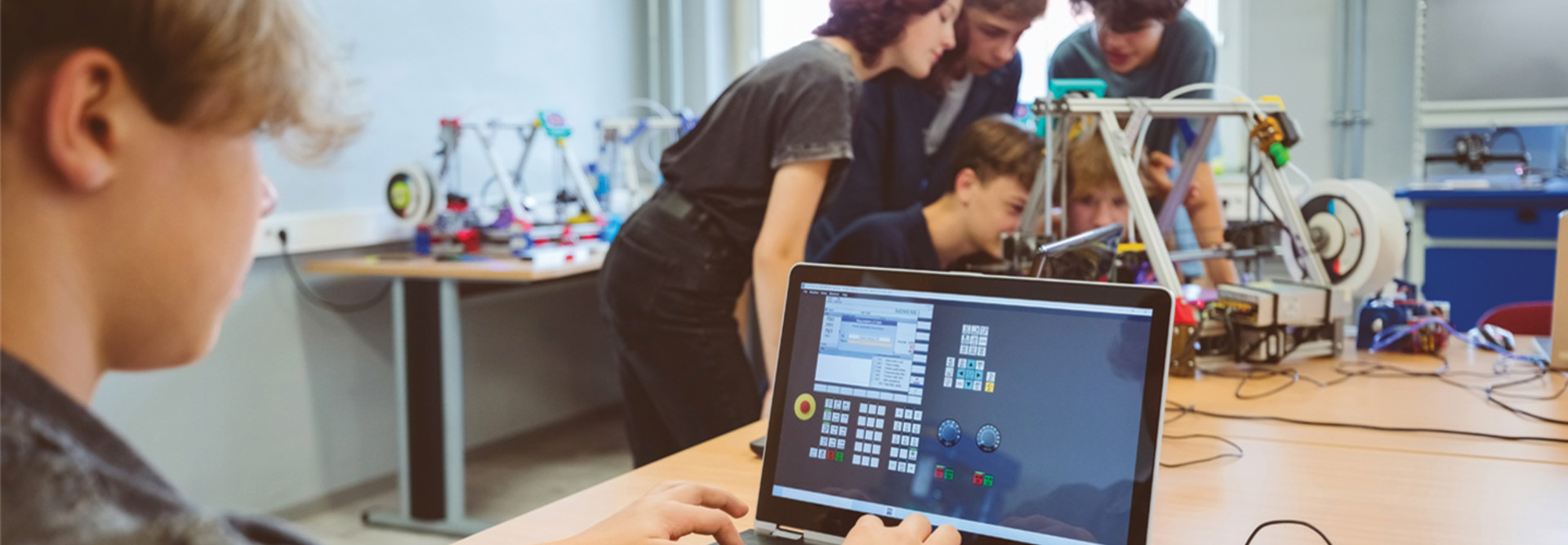Integrating Computer Science into a K–12 School
There are many subject matter areas in which schools can incorporate computer science. To build a more traditional computer science program, a school might use its career and technical education program. Typically, CTE programs give students access to more powerful devices and the opportunity to participate in an IT academy or cybersecurity training.
However, computer science can also be implemented into courses where it’s a piece of the larger puzzle. For example, it could be incorporated into a class on game design or a school’s core subject areas.
Schools can do it with almost any subject depending on how deep they want to go. If, for example, there’s a component within biology that’s really heavy with data and analytics, then any research students do is going to be data and analytics driven. This could help students understand, say, how computer science is used in marine biology. The right tools and framing for the lessons can help bridge those gaps.
KEEP READING: Students are programming robots to help K–12 schools.
Some schools are taking the lessons further, having students work on simulated or real IT equipment to teach them technology skills. Some programs put students in front of enterprise-grade hardware, and schools that train their students often have them closing out real IT tickets. Some even hire their students to work for the school after they graduate.
Finding and Keeping Teachers for K–12 Computer Science Courses
One of the biggest challenges for today’s K–12 schools is finding and retaining teachers who can teach computer science. Students who are trained and subsequently employed by the district often take additional classes or certifications in their free time and end up leaving the education sector to work elsewhere.
And it can be difficult to find people with computer science training and teaching skills. To teach a high school computer science class, there’s a big difference between a chemistry teacher who has learned some programming in his or her free time and someone with 10 years of programming experience in the tech industry. Most people in technical fields tend to stay in those fields; they don’t often choose later on to work in education.
RELATED: Artificial intelligence helps teachers defeat burnout and boost productivity.
Some schools choose to add a bonus or stipend to computer science teaching positions. Other schools might work with the computer science teacher to build the program from the ground up. This creates a vested interest on the part of the educator who worked to create the program.
With the release of the Department of Education’s 2024 update to the National Educational Technology Plan and the department’s previous artificial intelligence guidance, school leaders have a lot of strong reference material in their corner when petitioning their superintendents and school board members for computer science funding. Whether they use such funding for equipment in their CTE or core subject courses or to help pay for a computer science teacher, having the money is a crucial step to getting these lessons integrated into the K–12 environment.
This article is part of the ConnectIT: Bridging the Gap Between Education and Technology series. Please join the discussion on Twitter by using the #ConnectIT hashtag.







![[title]Connect IT: Bridging the Gap Between Education and Technology](http://www.edtechmagazine.com/k12/sites/default/files/articles/2014/05/connectit.jpg)




